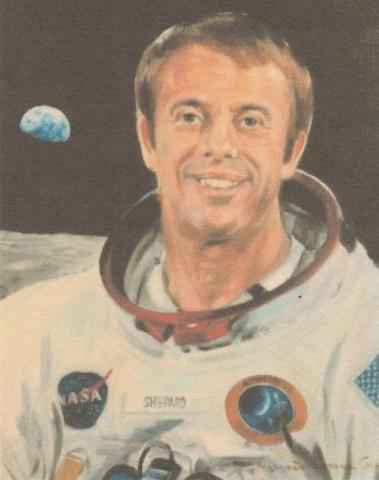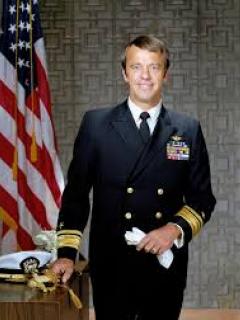|
Alan Bartlett Shepard, Jr. graduated from the United States Naval Academy in 1944, becoming a naval aviator in 1947. In 1950 he attended the U.S. Navy Test Pilot School where he became an instructor. He also attended the Naval War College, graduating in 1957. His outstanding record as a test pilot with several thousand hours of complex experimental flying played a major role in his selection as one of the original seven U.S. astronauts in 1959. After two years of extensive training, Shepard piloted the Mercury spacecraft Freedom 7 through its first successful sub-orbital flight. Although the flight lasted only 15 minutes, the capsule reached an altitude of 16 miles and a speed of 5,180 miles per hour. This historic flight was the beginning of America's manned space program. After his initial success, he was grounded because of an inner ear disorder, but remained with NASA as chief of the Astronaut department. In this capacity, he was responsible for monitoring the development and implementation of programs for training space flight personnel; pilot evaluation of the design, construction, and operations of spacecraft systems and equipment; and mission planning. After successful ear surgery, he was restored to flight status in 1969. He became commander of the Apollo XIV mission in January 1971. On this, man's third lunar landing mission, Shepard became the fifth man to walk on the moon, spending 33 hours on the lunar surface, 9 hours 17 minutes of it in extra-vehicular activity. While on the moon, Shepard playfully pulled out a golf ball and whacked it across the lunar surface. After this flight, Shepard resumed his duties as chief of the Astronaut Office until 1974, when he retired from the Navy and NASA with the rank of Rear Admiral.

Submitted by CDR Roy A. Mosteller, USNR (Ret)
|




